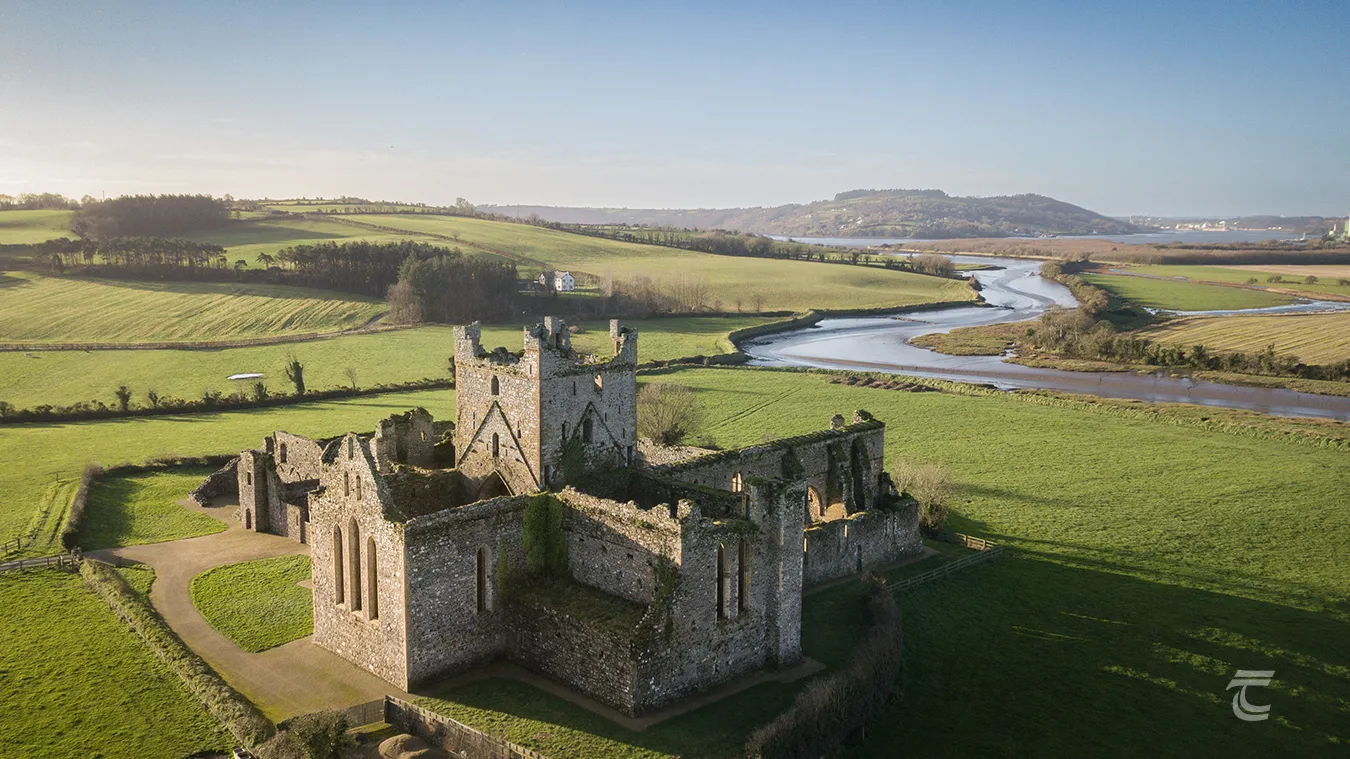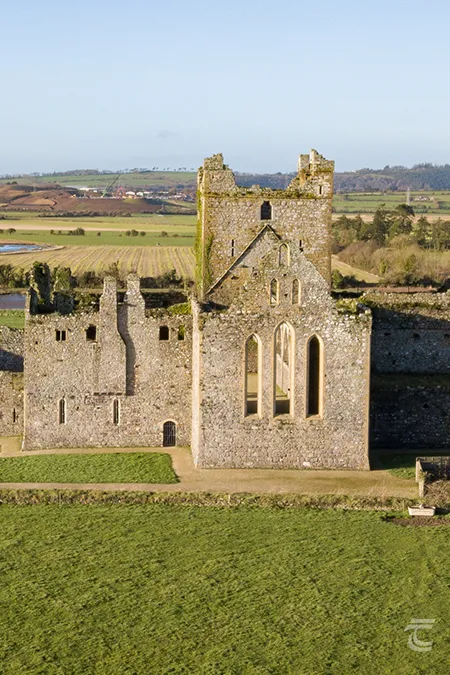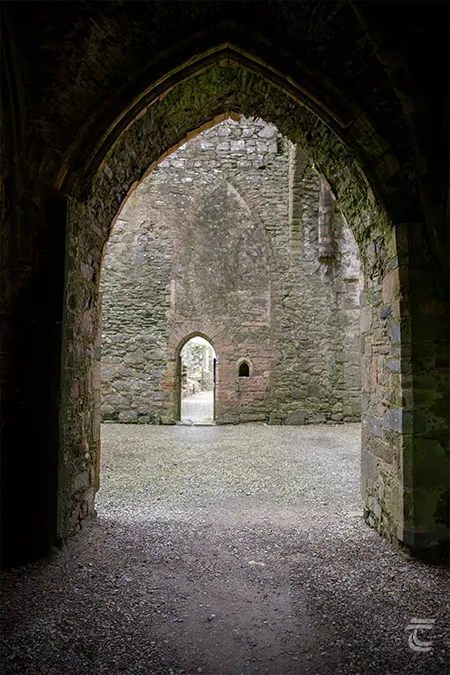Dunbrody Abbey
Dunbrody Abbey was founded by Hervey de Montmorency in 1182. He was a powerful ally of Richard de Clare (known as Strongbow) the political leader of the Normans in the early phases of their incursions into Ireland. Hervey de Montmorency served as de Clare’s administrative officer of the Lordship of Leinster, and he was rewarded for his service with lands around Dunbrody. Like many of the Anglo-Norman elite, de Montmorency was rather worried for his soul, and he also required help in administering and farming the newly acquired tracts of land. He successfully served both of these needs by granting the lands to the Cistercian Order of St Mary’s Abbey in Dublin, who established Dunbrody Abbey as a daughter house of St Mary’s.
The abbey was consecrated in 1201 by the Bishop of Leighlin, a man named Herlwyn, a nephew of de Montmorency. The abbey was founded on the low-lying plains near the Campile River, at a strategic point where the river enters Waterford Harbour. This gave it access to water, fishing, transport and trade. As well as the immediate area around Dunbrody Abbey, it also encompassed a landholding of some 13,000 acres. This would have been served by satellite chapels of the main abbey, and a large lay population.
For practical information about visiting this site Click Here

Aerial view of Dunbrody Abbey and the Campile River • Wexford
The Architecture and Later History of Dunbrody Abbey

Dunbrody Abbey • Wexford
Dunbrody Abbey is a fine example of Cistercian Gothic architecture. The chancel and transepts of the abbey were possibly the first to be constructed, followed by the nave. The abbey was substantially modified in the 15th century, and it is likely that the crossing tower was added at this time. Within the south transept the night stairs (which allowed easy access to the monks’ dormitories for evening prayers) still stand. Antiquarian illustrations from the 18th century show an ornate window in the western wall of the church, but unfortunately this wall and window collapsed in 1852. Today you can still see the cloisters, with possible traces of a lavabo that were discovered during archaeological excavations in 2007. The eastern range of the abbey houses the ruins of the sacristy, chapter house and an undercroft, which is positioned to the south. Where you can also find the remains of the refectory. The refectory walls survive almost to full height, with the remains of a reader’s lectern in the southern wall, where a monk would have read scriptures aloud during the silent communal meals. The refectory would have been a bright and airy dining room, with large south-facing windows. The kitchen is alongside the refectory, archaeologists found evidence that the monks of Dunbrody Abbey ate relatively well for the time, with kitchen waste discovered that indicates the consumption of beef, lamb, chicken, pork, goose, and fish. Beyond these claustral buildings are the remains of a gatehouse and a chapel.
The majority of the fine dressed stone within the abbey was imported from Dundry, near Bristol in England, more evidence of the wealth of the abbey at the time. Visitors today access the abbey from the east, but the main point of entry during its heyday would have been from the river. You can still see the shape of the large doorway where most would have entered, though it is now blocked up.
Historical records point to repeated bouts of conflict and ill feeling between the monks of Dunbrody and nearby Tintern Abbey, with bitter disputes over land. Local legend relates that the abbot of Dunbrody held a monk from Tintern in a cell for three days, and robbed him of his money and two horses. In the aftermath of the Reformation, the abbey was dissolved in 1536, and its lands were granted to Sir Osbourne Etchingham in 1545. Etchingham was an important official in the court of King Henry VIII, and served as the marshal of the English army in Ireland. He transformed parts of the abbey into a three-storey manor house. Today you can see evidence of his fine residence in the mullioned windows, chimneys and fireplaces. This house was abandoned in the 17th century for a new house that was built nearby to the east.

Dunbrody Abbey • Wexford
Upper left: the main buildings of Dunbrody Abbey • Lower left: interior of the refectory • Right: a view towards the large pointed arch that has been blocked
Top: the core buildings of Dunbrody Abbey • Middle: a view towards the large pointed arch that has been blocked • Bottom: interior of the refectory


